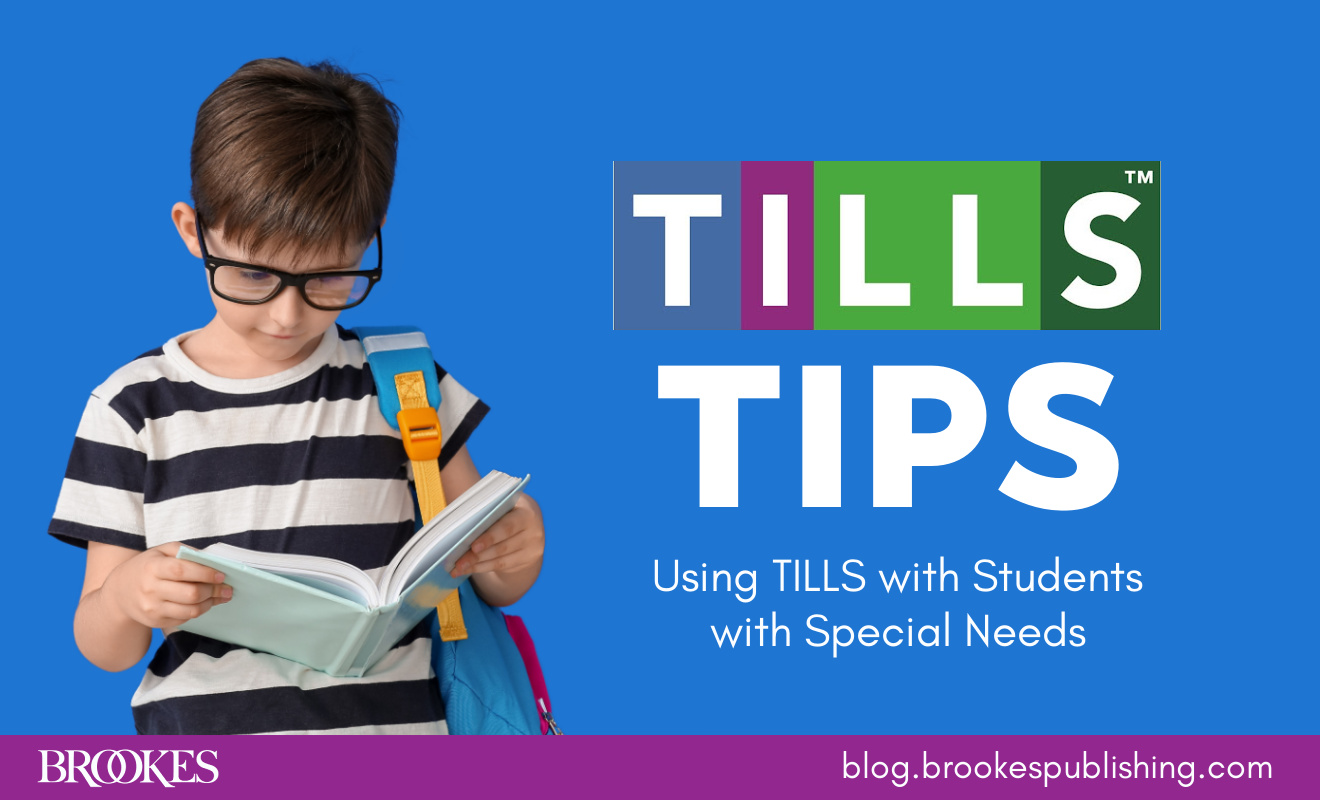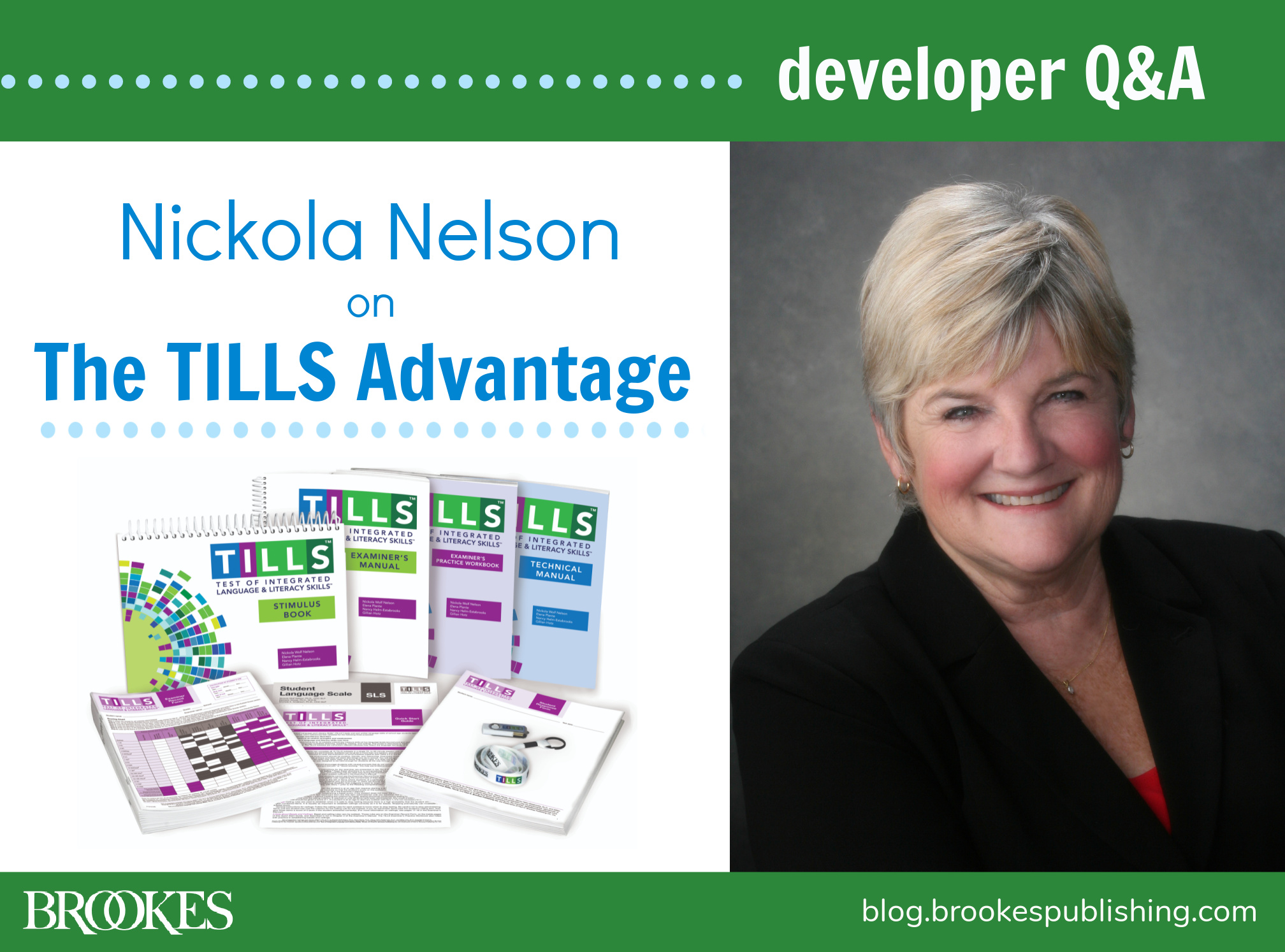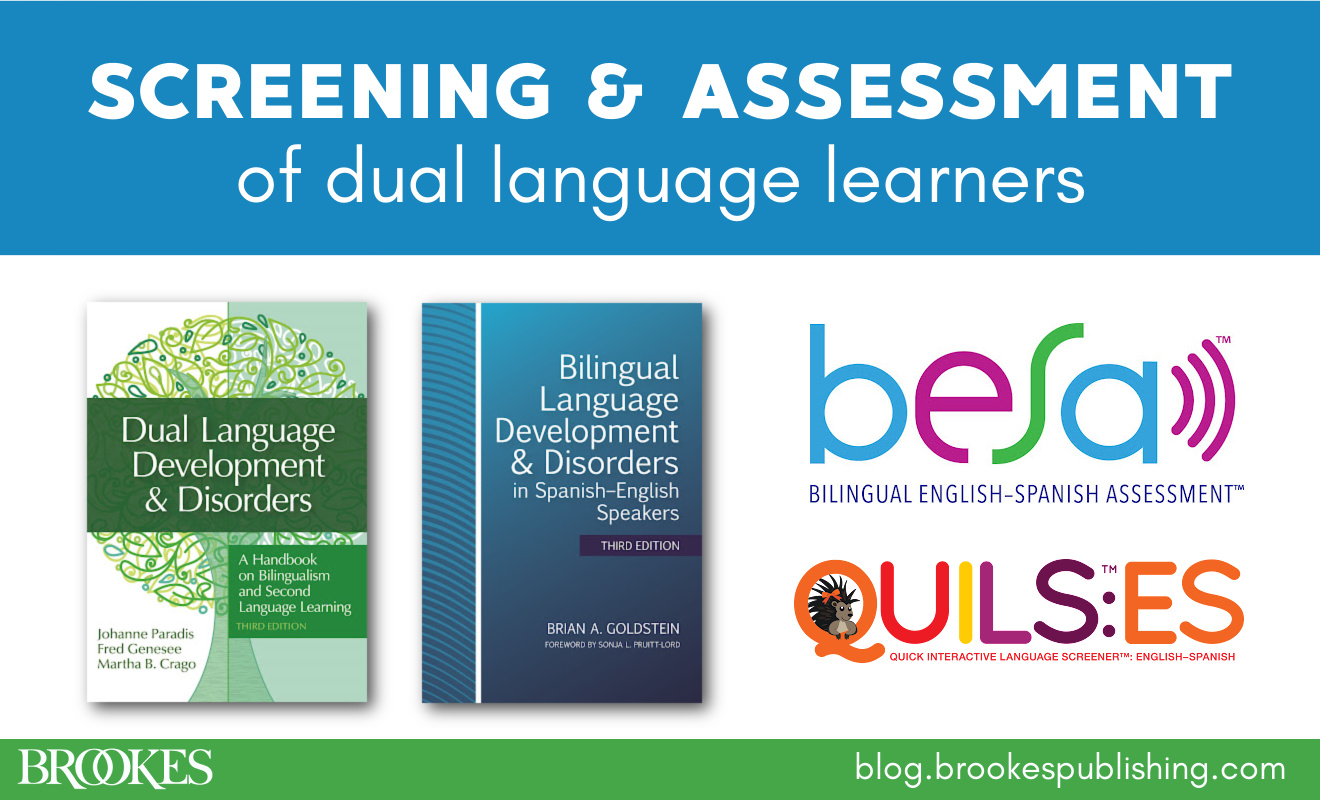TILLS Tips: Using TILLS with Students Who Have Special Needs
April 4, 2024
TILLS™ is the assessment that SLPs, educators, and reading specialists across the country rely on to test students’ oral and written language skills. It’s great for identifying language and literacy disorders—but can it be used with students who have other types of special needs? Today’s post (excerpted and adapted from the TILLS Examiner’s Manual) talks about the use of TILLS with students who have other diagnoses, modifications that can be used for students with special needs, and tips on creating a positive testing environment.
Can I use TILLS with students with previously identified special needs?
Students from three special populations were included in the TILLS standardization trials. (See the TILLS Technical Manual for more information about standardization.) These students were enrolled in the studies because they had been identified previously as having one of the following diagnoses:
- autism spectrum disorder
- deaf or hard of hearing
- intellectual disability (also called cognitive impairment)
TILLS can provide information about the language-literacy and memory skills of students with any of these diagnoses—but keep in mind that it’s inappropriate to administer the TILLS to any student with intellectual disability or autism who is functioning below a developmental age of approximately 6 years. It’s also inappropriate to test deaf or hard-of-hearing students with TILLS unless they have cochlear implants or properly fitted hearing aids or other hearing devices and have been learning language primarily through auditory-oral pathways rather than through sign language.
The standard age-appropriate administration procedures were used with these three populations during standardization. This included administering the chronological age–appropriate versions of the subtests that have different versions for different ages—Story Retelling (SR), Delayed Story Retelling (DSR), Reading Fluency (RF), and Written Expression (WE). You can administer the TILLS to students with special needs and compare their performance to normative data.
Can I make adaptations if needed?
You can make minor modifications for students with special needs. For example, for students with intellectual disability, use start ages that are suggested by available data regarding the student’s mental age. You can use start ages that are approximately half the student’s chronological age, follow clinical judgment, or simply begin with Item 1. For students with hearing loss, wear a microphone that is synchronized to provide frequency modulation (FM) or Bluetooth input for oral instructions directly into a student’s cochlear implant device, hearing aid, or other hearing device.
Also, be sensitive to behavioral signs displayed by students with some disabilities, such as intellectual disability or autism or both, that indicate that they are experiencing fatigue, distress, or other factors that may interfere with their ability to comply with the demands of testing. The student may need to be given a break, with testing resumed at a later time.
How do I establish a positive testing environment for students with special needs?
Here are a few tips for making the TILLS testing experience as positive as possible:
- Ensure the testing environment is quiet and free of distractions.
- Ask parents to tell you any strategies they use for maintaining the student’s interest, as well as signs of the student’s impending frustration, aggression, or other problems.
- Spend several minutes building rapport with the student, for example, by incorporating special interests into conversations, discussing items that the student may have brought to the testing session, or asking about the student’s interests.
- Provide a list of subtest numbers to help the student predict the sequence of activities and have the student cross off the number of each subtest as it is completed to keep track of progress.
- Provide access to the conventional supports for self-regulation used by the student to help reduce anxiety (e.g., a basket of fidgets [small, sensory manipulatives to help keep focus], a choice of chairs), ensuring, though, that the technique does not interfere with standard test administration.
- When appropriate, provide positive feedback, such as praise for completing a group of subtests, and use humor and supportive encouragement regarding general participation.
- Anxious or distractible students also may benefit from being tested over several sessions to allow for more breaks.
- Some students may need more frequent reassurance about their general performance and that they are doing well.
- Relaxed examiners who can use humor when testing also may help set students at ease.
Want to learn more about TILLS? Visit the TILLS website for everything you need to explore this groundbreaking test: an introductory webinar, FAQs, a free sampler, case stories, an extended FAQ, and much more.




Write a Comment
Your email address will not be published. Required fields are marked *
Post a Comment